
Author: japineda
A Universe in a Grain of Sand
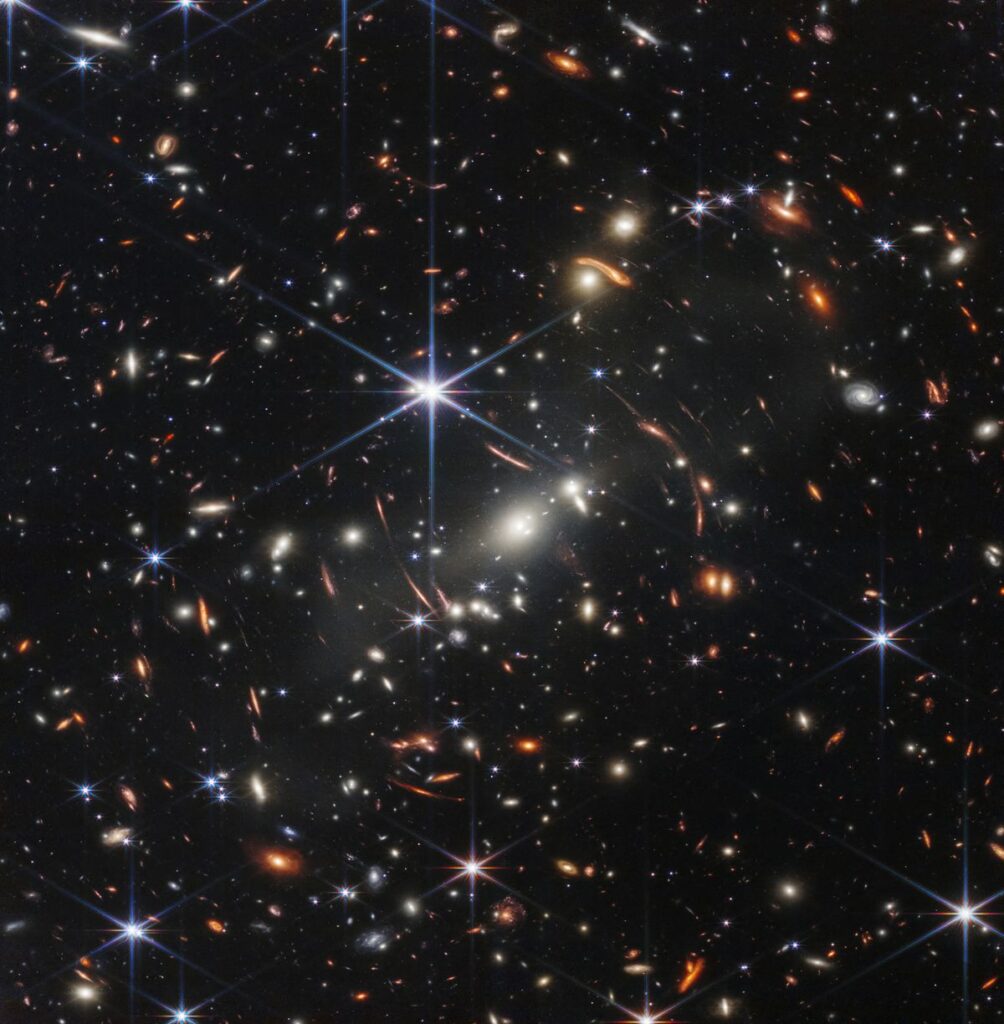
Auguries of Innocence BY WILLIAM BLAKE To see a World in a Grain of Sand And a Heaven in a Wild Flower Hold Infinity in the palm of your hand And Eternity in an hour. It is, we are told, a grain-of-sand view, A heavenly purview, This fish-bowl image of the universe. A James Webb telescopic picture of the sky. Unfolding before us this morning in July. A myriad galaxies, with myriads of stars. Far from our own galaxy, Jupiter, and Mars. So striking in their beauty and mystery. So incomprehensibly comprehensible So indispensably dispensable. It feels godlike to hold infinity in one’s mind, And glimpse eternity in a single frame. These may be the auguries of innocence, As Blake said so long ago, Brought about by human intent, though. This unique view of the face of God. Both mystical and real. Is at once natural and surreal. I cannot comprehend the distances shown, Nor guess the mysteries of this unknown. I cannot fathom something so sublime, Nor understand the compressed time. I cannot grasp the science at its source, Nor know the future course. I see excitement and giddiness In those who brought it into being. As they grasp the future they’re foreseeing. It’s a doorway to a playground Of future possibilities, Of unlimited capabilities and imagination, Of contact with other civilizations. A fresh dawning for the human mind, Offering a new path for humankind.
The Pale Blue Dot
By Carl Sagan
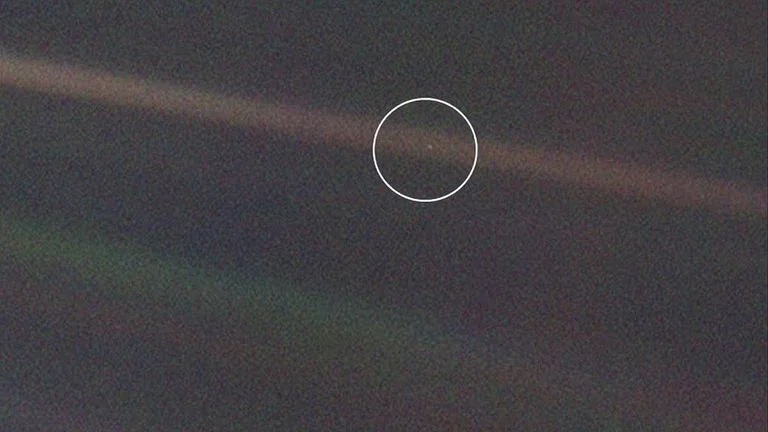
Consider again that dot. That's here. That's home. That's us. On it everyone you love, Everyone you know, Everyone you ever heard of, Every human being who ever was, Lived out their lives. The aggregate of our joy and suffering, Thousands of confident religions, Ideologies, and economic doctrines, Every hunter and forager, Every hero and coward, Every creator and destroyer of civilization, Every king and peasant, Every young couple in love, Every mother and father, Hopeful child, inventor and explorer, Every teacher of morals, Every corrupt politician, Every 'superstar', Every 'supreme leader', Every saint and sinner in the history of our species lived there – On a mote of dust suspended in a sunbeam.
Sagan’s beautiful statement was occasioned by seeing the photograph of the earth in space as a pale blue dot. I read it recently and affected me as only beautiful poetry can. It also reminded me of what Harold Ramis, American actor, comedian, director, and writer, said about carrying two notes to remind you of who you are. The first note reads, “The universe was created for my delight.” The second note says, “I am a meaningless speck of dust in the vastness of the universe.”
Ramis’s point was that life occurs in the rhythmic oscillation between these opposite poles, of meaningfulness and meaninglessness. The rhythmic oscillation of this dance occurs outside and within your conscious awareness, but in either case, you are a participant.
Nisargadatta Maharaj, an Indian guru, offered a similar sentiment when he said, “Between looking inside and recognizing that I am nothing and seeing outside and recognizing that I am everything–my life turns.”
You, me, the earth and everyone else born in this speck of dust are both nothing and everything.
Jumpstarting the Mind to “Wake Up”
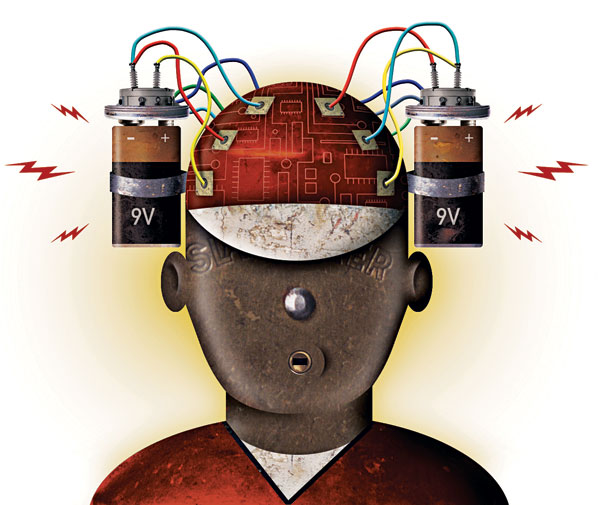
Many scholars who study the mind describe individuals as having an original sense of wholeness, or self. As a child, this sense of self is active, adaptable, energetic, curious, and creative. It is unencumbered by problems, with an attitude of openness, eagerness, and lack of preconceptions. Along the way, we develop an ego, and living a joyful, stress-free, and fear-free life turns problematic. We experience worries, anxieties, uninhibited thoughts, fears, overwhelming feelings, and seeing no way out of difficult circumstances. When these negative experiences persist and affect our mood, thinking, and behavior, they disrupt the normal flow, joy, and unity of life and obscure its natural wonder. When the interruptions and disruptions become unmanageable, they are the basis for physical and mental disorders, autoimmune and emotional disturbances, heart problems, addictive behaviors, and suicidal ideation. Even worse, if negative ideations become a recurring issue, the inevitable consequence is psychopathology.
What is the source of this problem? The major reason seems to be that out of the original unity to which we are born, a separate ego crystallizes during development. Individuation or ego-self differentiation is a normal aspect of development, but the schism between what is real and what is not creates problems when not understood. Ego creates an illusion of separation, as it emerges from the normal push-pull dynamics of resisting and accepting what life presents. Many justified reasons, including our initial dependency and the potential harm negative experiences have on an immature mind, make our tendency to resist life more prevalent than our acceptance of it. Over time, resistance becomes stronger, reified, and real to the point we identify it as our true self and as our exclusive response to life.
Numerous solutions to the ego-self differentiation problem have been put forth from behavioral, psychological, and spiritual perspectives. The most enduring solutions are those that help us understand the source of the conflict and, from that point of view, its solution. In my book, Transforming Anxiety into Creativity, I recognize and understand the problem by combining a neuroscience background with a personal understanding of the mind based on knowledge and experience with Zen Buddhism. The solutions I present are easy to understand and available. Yet, they are difficult to put into action, as they call for a genuine change in perception and awareness.
What is the principal message? That awakening and self-realization are psychological and spiritual solutions to ego-self differentiation. From a spiritual viewpoint, awakening or “waking up” refers to understanding one’s true nature, the unity of life, and our role in this greater sense of connection. It means you wake up from the illusion, the dream-like experience in which you feel separated from life, to the recognition that you are and always have been integrated with it. This recognition of unity is a remembrance, a going back to what you once knew.
Far too few people recognize the source of their mental suffering and the ability they have to do something about it. As Henry David Thoreau put it, “The mass of men leads lives of quiet desperation.” Likewise, many descriptions of the spiritual awakening experience are too confusing to be helpful. These descriptions, however, boil down to the notion that one must first recognize “that belief in my thoughts is not in any way definitive of my true inner self.” This simple yet powerful insight starts the process of de-identification with the egoic mind.
When de-identification takes hold and you can honestly say, “I don’t believe that thought,” it is like the sudden giving way to the bottom of a pail of water. The filters through which the world is experienced are metaphorically cleared and cleansed. Your ego or “I” momentarily disappears in a rush of awareness, liberated from identification with resistance to life. The expansive consciousness, obscured by the limited ego, is suddenly liberated and appreciated. You become conscious of being conscious and encounter unlimited awareness. The experience brings a sense of freshness to the wonder of sense perception and of who you are.
This awakening experience is a process, one that can be gradual (including multiple small awakenings) or fast(er). Neither fast nor slow is better or worse, they only differ in the timing of the changes experienced. Our culture makes us skeptical of fast means since they bring to mind miracle-like processes, with not enough time to understand them. Thus, there is more discussion and focus on slow means. Like seeing a therapist, we recognize it may take a dozen or more years to resolve the issues. Slow solutions, like mindfulness meditation, spiritual study, ethics, and prayer, seem rational, are more likely to lead to a positive outcome, provide longer lasting solutions, require less effort, etc. In reality, our deceptive egoic mind creates these “explanations.” De-identification with thoughts means its own disappearance and so it wisely favors a slower demise. Yet, with one immediate change in perspective, which we are all capable of doing, we can jumpstart the mind to wake up.
Traditions like Yoga, Vedanta and Buddhism agree that the end goal of awakening, or enlightenment, is already here and now, that it is our true nature — or the true nature of reality. Thus, not that we have to achieve or become it, we simply need to remove the obstacles (the egoic mind) to realize its expression. Thus, knowing that you once held this treasure differs from never having had possession of it. So, above all else, the path to awakening requires the conviction that what you aspire to is real, since you once had it. While you may no longer identify with such a mind, you have not lost it, and it is possible to recover. This journey to waking up is a voyage of rediscovery.
The two broad approaches to removing the obstacle of the egoic mind are to either emphasize the need to transform and purify the mind (or even transcend it altogether). This is the gradual approach carried out through practices such as meditation, spiritual study, ethics, devotion, etc. Or, the fast(er) approach, which emphasizes the “already present” aspect of enlightenment. This focuses the teachings more around inquiring into your true nature and simply living in the present with non-attachment.
Living in the present with non-attachment provides an immediate doorway for a return to the extraordinary mind you once had, the one associated with a joyful and creative life. This is not a novel idea, but there are now science-based explanations for why such a switch works. Bringing attention to the immediacy of the moment changes the focus of attention from the mind’s ruminations of the past and future to the awareness of present circumstances and holding such thoughts in awareness. Nonattachment means not getting emotionally involved with the thoughts, but observing each mental dustup that arises without judgment. This is the most important action to implement. When done correctly, living in the present with non-attachment stops anxious, unmanageable thoughts in their tracks. The effect is immediate and, with practice, long-lasting.
That turning point, a longer-lasting experience of the present moment, marks the awakening experience and a recognition of the original unity you once had. It is a rebirth in which you find yourself childlike, but with greater appreciation. The opportunity for true living opens up—an ability to see things as they really are, without resisting them, and a genuine enjoyment of life.
If you have questions, direct them to: jpineda@ucsd.edu.
A Neuroscientist’s Spiritual Journey: The Podcast
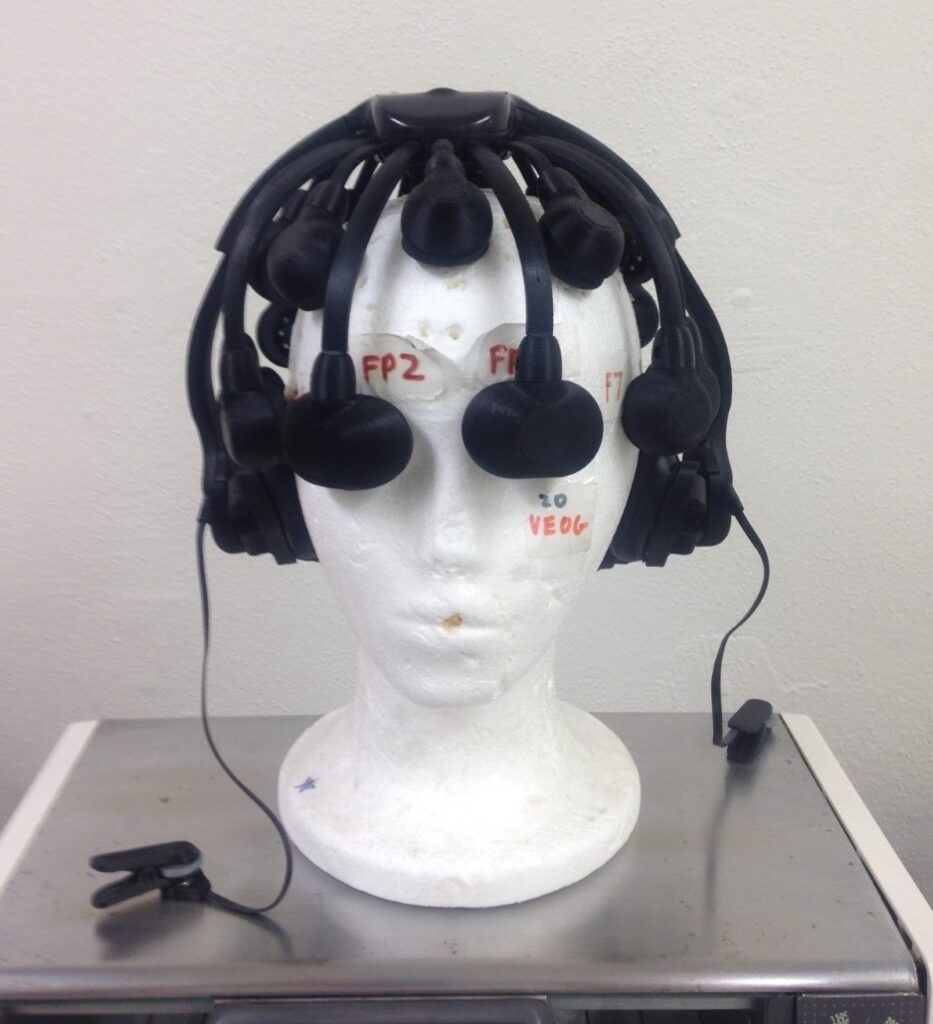
My passion at this point in life is to share my professional and spiritual insights with others. This podcast is one such attempt. Here is where you can find it:
Youtube: https://www.youtube.com/channel/UCmga5Z4JdHziQjtCdnVhYuw/videos
Apple Podcasts: https://podcasts.apple.com/us/podcast/the-middle-way-with-dr-matthew-goodman/id1566423470
Spotify: https://open.spotify.com/show/24QlEy5FOCTSQTWjsoOCRZ
In my creative endeavors, I try to explore how true seeing, hearing, feeling, and thinking can quiet the overactive mind and how this allows silence to become the fountain of creative thought. From such silence, I’ve experienced the emergence of a new perception and awareness. This awareness of unity is infused with intrinsic joy, love, and empathy towards others, and filled with a deep and uncompromising dedication to what is true and real.
Professionally, I am Professor Emeritus of Cognitive Science, Neuroscience, and Psychiatry at the University of California, San Diego. Having joined the Department of Cognitive Science at UCSD as a founding faculty member in 1989, I remained for the rest of my 28-year academic career. My hope is that my work impacted and inspired generations of undergraduate and graduate students to take on hard questions in the neurobiology of the human mind.
I have authored many widely cited papers in animal and human cognitive and systems neuroscience and edited one academic book (Mirror Neuron Systems: The Role of Mirroring Processes in Social Cognition). This book is a collection of research on the functional significance of mirror neurons, which includes my work on autism. It is one of the most cited and downloaded books in the field.
For the last twenty years, I became interested in spiritual matters as a bridge to a fuller understanding of the mind. This led me to explore Zen Buddhism, train with a master teacher, and develop my creative side. This led to the publication of two books of poetry (Quieting of a Mind and Dawning of a New Mind) focusing on mind-brain relationships with an emphasis on spirituality, mysticism, environmentalism, and social activism. Most recently, I published the story of my journey and the bridging of science and spirituality (Piercing the Cloud: Encountering the Real Me).
Unblemished Grace
A Prayer for Ukraine
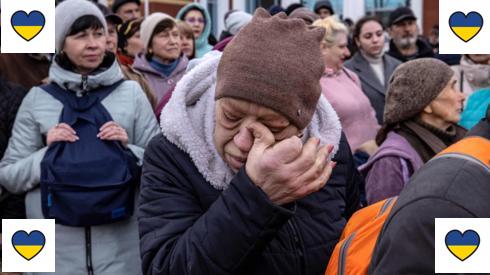
Whether in war or in the streets, Whether alone or in a group, Whether deliberate or not, My aching heart reflects On what it takes To end a human life. What cruelty, anger, and lack? What unattended, frozen heart? What distorted, twisted mind? What unexpected fate? Conspire to end a life which God’s Wondrous goodness has wrought. I see the twisted hands Bound behind the back. The naked bodies strewn Among the ruble of disdain. Blood everywhere, Defiling our human soul. The mother-child in mid flight, Gunned down by a fellow being. Thrown into the open grave pit, Replete with hands and feet Stretching out in silence Toward our wounded heart. My tears fill with anger and rage. Despair blooms and I must act. Yet, a helpless sense overwhelms My feeble thoughts of change. I stand paralyzed, unable to move, And can only surrender to the pain. I know the love my heart holds. A delicate, precious, beautiful flame That is extinguished when ignored, Yet grows into a roaring fire Of love, compassion, and goodwill When attended and desired. I know the world from this radiance, And act in service of the grace it gives. Thus, despite the brutality I see, I find it worthwhile to remember That the grace of goodness lives Even in those whose evil is unleashed. They act this way only because In ways large and small, They, their families, and their world failed To nurture that fragile flame, That unblemished grace of goodness That gifted them with life. I lift my voice in silent prayer for such waste and wretchedness, And offer my wounded heart To the valiant souls in its wake. May they experience life from its radiance, And act in service of its grace.
Can Brain Evolution Teach Us Anything About Conflict?

The Russia-Ukraine war playing out on television these last two weeks has produced a helpless feeling of not being able to help. Yet, it has motivated me to explore alternative ways to be of use. This essay represents a small way of using what I know to consider future answers to such conflicts.
The 21st century is well on its way to becoming the era of translational biological information. This means we are applying the vast amount of knowledge gathered over the last century to change the world for the better. Our modern economy, law, politics, and the military reflect this process. These are several of the many institutions in society that owe a great deal to the growing understanding of the mind. Advertising, marketing, focus groups, negotiations, ethics, law, and intelligence work—all rely on awareness of how we think and decide. From genetics to personalized medicine, the study of the human mind sits at the edge of a truly transformational time. We know well the link between malnutrition and depression, while we learn more every day about the role depression plays in mild cognitive impairment. Other findings, such as the effects that microbiome bacteria in our stomachs have on cognition, are nothing short of extraordinary.
For the past century and a half, we have learned that changes in our brain result in modifications to the mind and to our personality. Tools to study and learn these brain-mind relationships, such as deep brain stimulation, have moved us from indirect to more direct mapping. We have discovered ways to know how people decide and think, and how it is we communicate with each other. A more recent development in neuroplasticity is that modifications to our personality can cause changes to our brains. Mindfulness meditation to manage stress rewires unhealthy circuits in the brain, such as the HPA axis response.
What such insights have produced is not only a better grasp of how information processing affects perception and cognition but how, through extensive training, we can extend our personal and sociocultural boundaries. Neurotechnology, one of the new sciences in this contemporary world, has developed methods for treating and repairing soldiers injured in battle. It has figured out how we move cursors across a screen through the power of thought and how to control an advanced prosthetic arm in the same way. Neurotechnology restores the sensation of touch to an individual with severe neuro-degenerative injury.
The consequences of this new science, however, are not always positive. In the name of national security and warfare preparation, neuropsychological training also eases individuals into controversial tasks, such as killing. Thoughts control the flying of drones. Pharmaceuticals help soldiers forget traumatic experiences or produce feelings of trust to encourage confession in an interrogation. Thus, the weaponization of biological information raises ethical concerns.
The dual use of scientific information for good and bad ought not to prevent us from extracting lessons on how to avert conflict. Given all the current clashes, it is an opportune time to ask whether there is anything in the biological treasure trove of knowledge that can help us deal with conflict or even how to avoid it.
Optimal prediction in decision-making is one innovative way to prevent conflict. Imagine being able to anticipate the plans of others, especially adversaries, and forestall, or prevent those efforts? Could we have stopped the Ukrainian war had we known that Russia would invade the country? Is it possible to stop any conflict if we know the problem before it happens? The rational answer would seem to be yes. Interestingly, the human brain evolved for “optimal” prediction in decision-making, turning Homo sapiens into one of the most successful species to survive a violent and uncertain world. It sounds reasonable, therefore, to ask whether there are lessons in this evolution that we can extract for more general use?
Recent developments in cognitive neuroscience, based on neurologically inspired theories of uncertainty, have led to proposals suggesting human brains are sophisticated prediction engines. This means the brain generates mental models of the surrounding environment to predict the most plausible explanation for what’s happening in each moment and updates the models in real time. According to Andy Clark, a cognitive scientist at the University of Edinburgh in Scotland, “You experience, in some sense, the world that you expect to experience.”
We assume the major function of “looking into the future” through prediction, preparation, anticipation, prospection or expectations in various cognitive domains is to organize our experience of the world as efficiently as possible. The brain-mind is optimally, not perfectly, designed to cope with both natural uncertainty (the fog surrounding complex, indeterminate human actions) and man-made uncertainty (the man-made fog fabricated by denials and deceptions). We do this by conserving energy while reducing uncertainty. This ability evolved to support human intelligence through continuously matching incoming sensory information with top-down predictions of the input. Analysis of the temporo-spatial regularities and causal relationships in the environment produce top-down predictions or expectations—something known as Bayesian inference.
The brain uses this knowledge of regularities and patterns to make a model or the “best guess” about what objects and events are most likely to be responsible for the signals it receives from the environment. This “best guess” goes through an iterative process of minimizing the mismatch (i.e., correcting the error) between expectancy and reality until it reaches an optimal solution. Mental models are forms of perception, recognition, inferences about the state of the world, attention, and learning, which are beneficial for more pertinent reactions in the immediate situation.
In this perspective, mental states are predictive states, which arise from a brain embodied in a living body, permeated with affect and embedded in an empowering socio-cultural niche. The result is the best possible and most accommodating interaction with the world via perceptions, actions, attention, emotions, homestatic regulation, cognition, learning, and language.
A predictive machine requires a high inter-dependence of processes, such as perception, action, and cognition, which are intrinsically related and share common codes. Besides the feedforward, or bottom-up, flow of information, there is significant top-down feedback and recurrent processing. Given the levels of ambiguity and noise always present in the environment and our neural system, prior biases or mental sets become critical for facilitating and optimizing current event analysis. This occurs whether it concerns recognizing objects, executing movements, or scaling emotional reactions. This dynamic information flow depends on previous experience and builds on memories of various kinds, but it does not include mnemonic encoding. Indeed, the more ambiguous the input, the greater the reliance on prior knowledge.
The predictive model of the brain has been successful in explaining a variety of mental phenomena, such as inattention and distraction, beliefs and desires, as well as neural data. Sometimes, though, the brain gets things wrong because of incomplete or inaccurate information, and this discrepancy can cause everything from mild cognitive dissonance to learning disorders to anxiety and depression. But our survival is proof positive that whatever strategies we learned are highly effective in navigating a world of uncertainty.
Here are eight lessons regarding the predictive brain that may be helpful in dealing with conflict:
- Recognize your use of mental models. To deal with uncertainty in the world requires creating mental models in which we map our understanding and expectations about cause-and-effect relationships and then process and interpret information through these models or filters. Mental models become critical for facilitating and optimizing our responses to current events.
- Understand your mental models. Recognize that complex mental processes determine which information you attend and, therefore, mediate, organize, and attribute meaning to your experience. Your background, memories, education, cultural values, role requirements, and organizational norms strongly influenced this dynamic process.
- Withhold judgment of alternative interpretations until you have considered many of them. Expertise, and the confidence that attaches to it, is no protection from the common pitfalls endemic to the human thought process, particularly when it involves ambiguous information, multiple players, and fluid circumstances.
- Challenge, refine, and challenge again all your mental models. Discourage conformity. Incoming data should reassess the premises of your models. Remain humble and nimble. Be self-conscious about your reasoning powers. Examine how you make judgments and reach conclusions. Encourage “outside of the box” thinking.
- Value the unexpected. It reveals inaccuracies in your mental models. You cannot eliminate prediction pitfalls because they are an inherent part of the process. What you do is to train yourself on how to look for and recognize these obstacles, view them as opportunities, and develop procedures designed to offset them.
- Emphasize factors that disprove hypotheses. Increased awareness of cognitive biases, such as the tendency to see information confirming an already-held judgment more vividly than one sees “disconfirming” data, does little by itself to help deal effectively with uncertainty. Look for ways to disprove what you believe.
- Develop empathy and compassion. Put yourself in the shoes of others to see the options faced by others as they see those options. Understand the values and assumptions that others have and even their misperceptions and misunderstandings. Then, act.
- Change external circumstances instead of trying to eliminate everyone’s biases. Mental models are resistant to change primarily because they reflect the temporo-spatial regularities and causal relationships found in your environment. Restructure the setting and it will affect your perceptions.
Loving Kindness Meditation Invitation
Happy Valentine’s Day!
I am certain your heart is full of love on this beautiful day. Thus, it offers the perfect opportunity to do something meaningful on a global basis. Click on the URL below and join us in expressing that love towards others.
Torrey Pines beach early in the morning
Our Evolving Sense of Awareness

Despite the mountains of information about mind and its relationship to brain, there remains a mystery at the core of our being. The holy grail of this mystery is awareness, the ability to hold something “in consciousness.” Neuroscientists and philosophers have called our first-person experience of the subjectivity that arises from this holding function the “hard problem.” This is because, unlike most other problems in science and life, this one has proven resistant to rationality and the scientific method. Recently, however, one promising approach has helped constrain, at least for me, the multiple ideas about awareness by placing its understanding within an evolutionary context.
In his “attention schema” theory, the neuroscientists Michael Graziano has proposed that awareness evolved in stages. The assumption behind this perspective is that each level in the progression provided fitness value and survival benefit to a species. Initially, according to Graziano, “awareness” involved bottom-up signal-to-noise mechanisms that selectively enhanced signals. The existence of some of the earliest neurotransmitter systems, namely the dopamine, norepinephrine and serotonin systems that perform such a function, is consistent with this idea.
The next step in the progression likely concerned the interaction between signal enhancing mechanisms and top-down biasing and switching mechanisms that developed for greater control of the processing associated with the enhanced signal. The circuit in the basal ganglia, involved in the integration and selection of voluntary behavior, is a good example of this. Here, the neurotransmitter dopamine operates on striatal neurons to perform a switching function, controlling the flow of information in the direct and indirect pathways of the circuit.
According to the principles of control theory, an even more effective way to control a complex variable is to have an internal model of that variable. This allows the system the ability to simulate its dynamics, monitor its state, and predict its function, at least a few seconds into the future. Thus, Graziano suggests that the next critical jump in the evolution of awareness was the development of an internal model of attention (a simulation) that allowed the brain to attribute to itself a “mind” aware of something. I would add that, at this level, evolution moved from nonconscious to conscious control and subjectivity. The awareness that “I am attending to this thing” was born from such bidirectional interactivity.
Adapting this internal model of attention to social attribution led, at some later stage, to ascribing awareness to other beings. Finally, because of language, culture, and other social developments, humans became extremely good at modeling others, perhaps too readily. Such an ability likely explains our readiness to anthropomorphize or attribute consciousness to characters in a story, puppets and dolls, thunder, oceans, empty spaces, ghosts and gods.
Justin Barrett calls this the Hyperactive Agency Detection Device, or HADD, and it appears to be a consequence of our hyper-social nature. The readiness to simulate and attribute a “mind” to animate and inanimate things may explain the sense some of us have of a rich spirit world surrounding us. Undoubtedly, this aspect of awareness provides side benefits, such as aesthetic experiences, including our sense of wonder about our mysterious world.
The Present

At times these past few years The Light has seemed to fade, And space for sadness made. Enticing madness to appear. We yearn for normal times. Our cries reflect the torment Unheeded for the moment In our restless, rhythmic rhymes. Yet hope remains a steady fire Melting through the yoke, The burdens that we spoke, And strength behind desires. Setting wounded mind aside, We encounter That which never left, Reminder of a noble guest, Who calmly takes the world in stride. There is now a deeper sense For we know it’s not a ploy. Our heart sings for joy, As we focus on the Present. Fear fades while joy and goodness grow. And intimate connections made, Providing us the shade Of peace that deep inside we know. I wish for you this unique present On this happy Christmas morn: A joyous heart that’s born Of life’s eternal Present.

